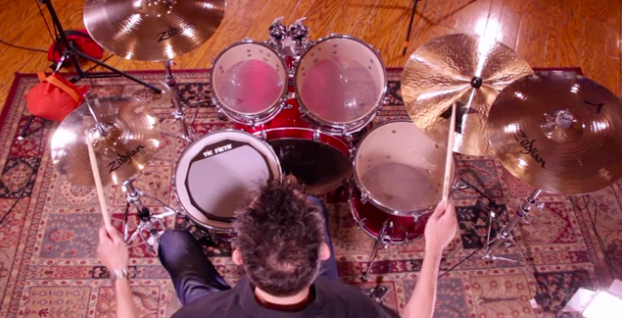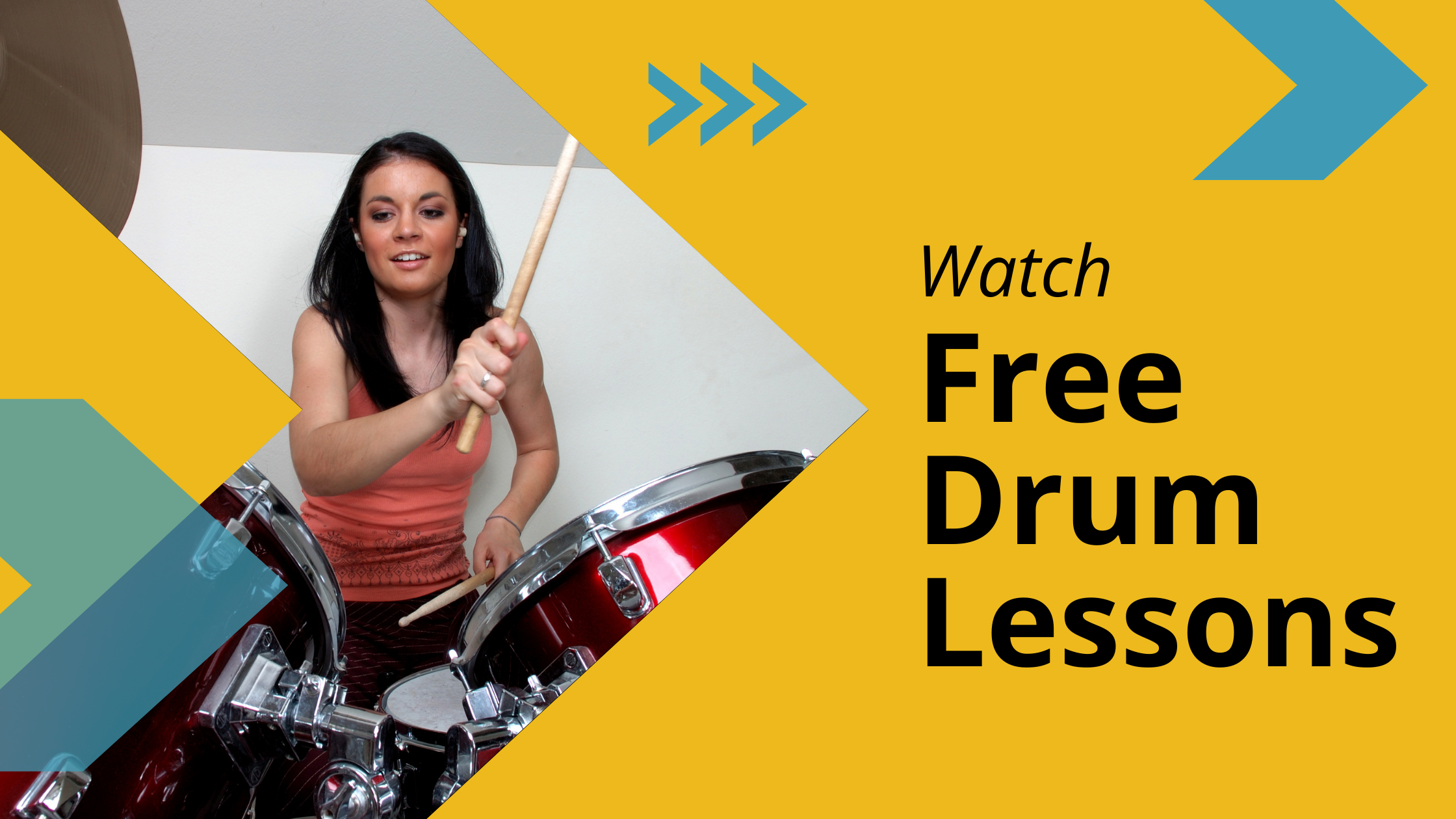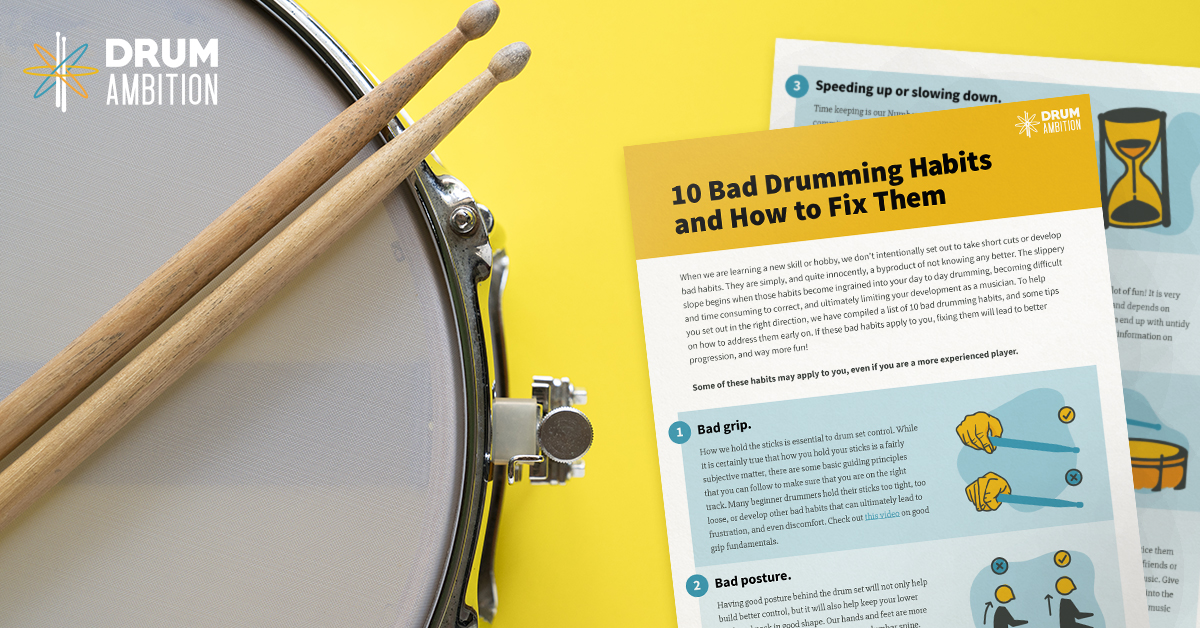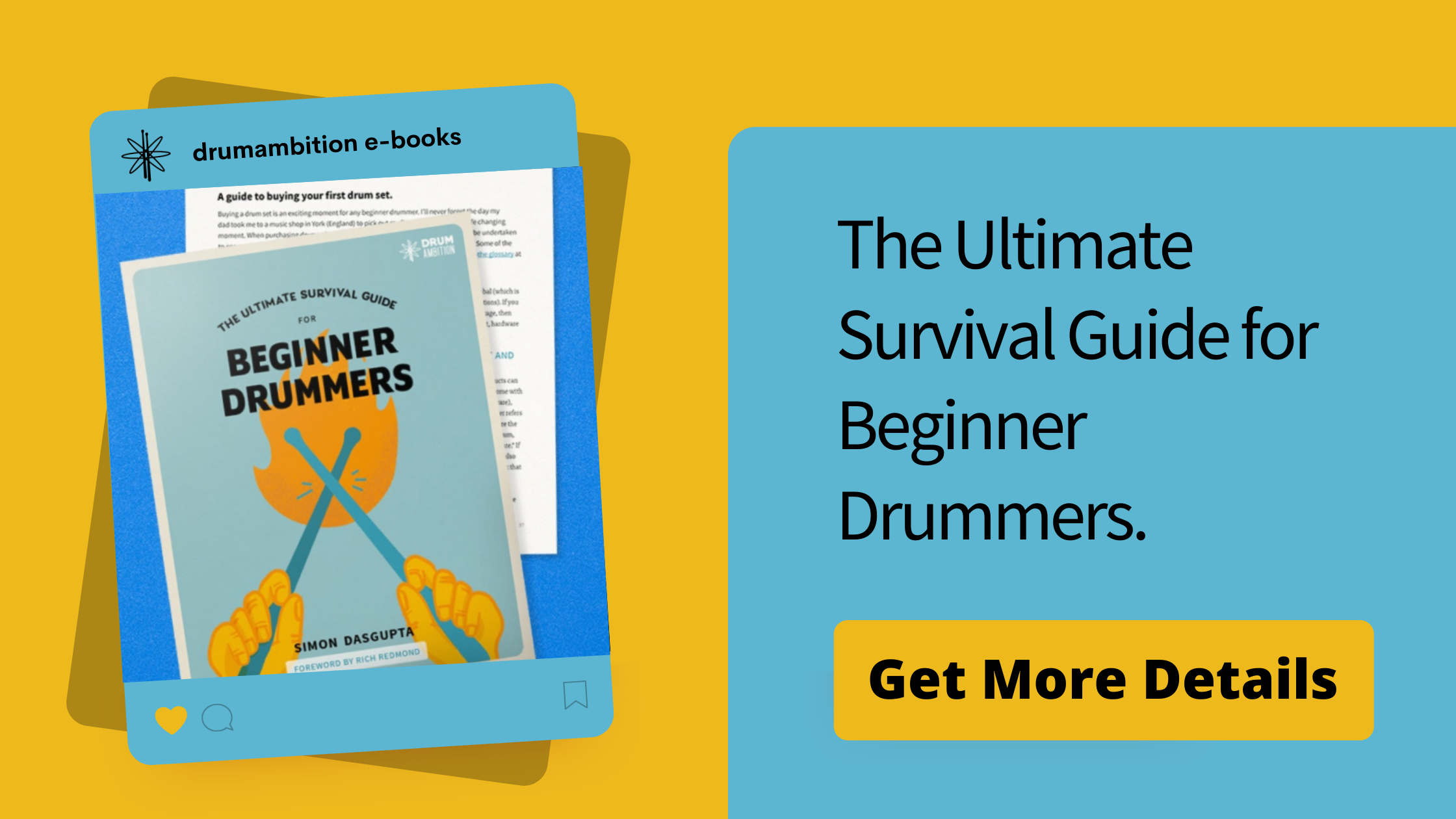Is it realistic to expect both hands to feel equally balanced when learning the drums? We all have a dominant hand. It's the way we're wired, and there's not much we can do about it. Or is there? This article is intended to be useful for left-handed drummers wondering whether to reverse their setup and any drummer interested in developing their weaker hand.
Sitting behind a drum set for the first time, we soon learn that coordination is quite challenging. In the early days, we get through the first few drum lessons by playing slowly, counting aloud, and understanding which limb plays which note. It's a lot of fun and the start of an incredible journey! It soon becomes apparent that one hand (our dominant hand) is significantly more developed, and this presents some interesting challenges. This blog examines the importance of developing your weaker hand, why left-handed drummers should consider using a right-handed setup, and why right-handed drummers should experiment with playing open. Don't forget the Drum Ambition Glossary for any unfamiliar terms.
Helpful related articles:
10 bad drumming habits and how to fix them.
Should playing the drums be painful?
In his time as a professional drum teacher, our Founder has met a small number of people that he would call "truly ambidextrous," where they can use both hands equally well. For the rest of his students, and indeed, for himself, there is a dominant hand. In most cases, it is the right hand, but obviously, this depends on the individual.
Suppose you are a fan of drummers including Dominic Howard (Muse), Phil Collins (Solo Artist / Genesis), and Ian Paice (Deep Purple). In that case, you may have noticed that they have a reversed setup, with the hi-hats on their right-hand side, the ride cymbal on their left, while playing the bass drum pedal with their left foot. In other words, they are reversing what a right-handed drummer would do. These drummers are naturally left-handed and have chosen to lead with their dominant left hand using a left-handed setup.

In the image above, you can see an overhead picture of what we would term a "right-handed setup." The hi-hats are to the left of the snare drum (played by crossing our right arm over our left arm), and when desired, our right hand also plays the ride cymbal, which is positioned to the right of the set (pictured). It also makes perfect sense for most right-handed drummers that our right foot plays the bass drum pedal, which is by far the most commonly played foot pedal - the other foot pedal being the hi-hat, played with the left foot.
There is no doubt that it makes perfect sense for us to do what instinctively feels stronger and more comfortable. One of the things you will discover very quickly when learning to play the drums is that your dominant hand is not only stronger but considerably more developed, and most people feel an imbalance between their two hands. This becomes more evident when practicing single strokes on a practice pad or snare drum (Right, left, right, left, etc.) and drum fills and grooves that utilize both hands. Therefore, one of our long-term goals should be to strengthen our weaker hand. This is very much a "work in progress" goal, achieved gradually over long periods, and of course, with lots of practice.
If you are naturally left-handed, our first suggestion is to consider playing a right-handed setup for the first ten lessons. There is some method in the madness here, even though it seems counterintuitive. Firstly, since a left-handed drummer will be crossing their arms and leading with their right hand on the hi-hat, they are immediately working on developing their weaker limb from day one. Since the whole experience is new anyway, this shouldn't seem out of the ordinary. (It's not like asking a left-handed person to write with their right hand - that would be highly challenging and somewhat messy). The same would go for the feet, where they are immediately developing their right foot on the bass drum pedal. One practical thing to consider is that most popular music books on drum fills and grooves provide suggested sticking patterns from the standpoint of right-handed drummers. It can be frustrating to have to reverse everything if you are left-handed. This is not a significant problem but an important consideration nonetheless.
Left-handed drummers also have the option of playing "open-handed." This is when a right-handed drum set is played, the left-hand plays the hi-hat, and the right hand plays the snare drum. The arms are not crossed, hence the term "open-handed." This presents an exciting musical option on the drum set, as it opens up the possibility of grooves and fills that would be difficult, inefficient, or just plain impossible using the more traditional "crossed" approach. Some left-handed drummers who use this technique include Carter Beauford (Dave Matthews Band) and the legendary British drummer Simon Phillips.
Open-handed playing is not just the preserve of left-handed drummers. We also encourage right-handed students to lead on the hi-hats with their left hand once in a while. Again, this is an excellent way of developing your left hand and learning specific beats and fills that can be played exclusively in an open-handed situation.
Other exercises are designed to strengthen your weaker hand. For example, if you are right-handed, try playing single strokes (one of the drum set rudiments) leading with your left hand. (Left, right, left, right, left, right). You can reverse most popular sticking patterns to lead with your left hand. As discussed earlier, it is desirable to try and get our hands as balanced as possible over time because this will lead to better control. There are some wonderful byproducts of control that include speed, power, dynamics, efficiency, endurance, musicality - to name a few. None of these things are possible without control, which is aided by having an overall balance in our hands and feet.
As with all situations when learning the drums, the critical factor is to find out what works for you, even if it might be out of the ordinary or not necessarily in line with what other drummers may suggest to you. As we have discussed on many occasions, drumming is wonderfully subjective, and part of our musicianship is determined by how we approach our instrument, conventionally or otherwise.
We are here to help!
If you have any questions about this article, please email [email protected].



